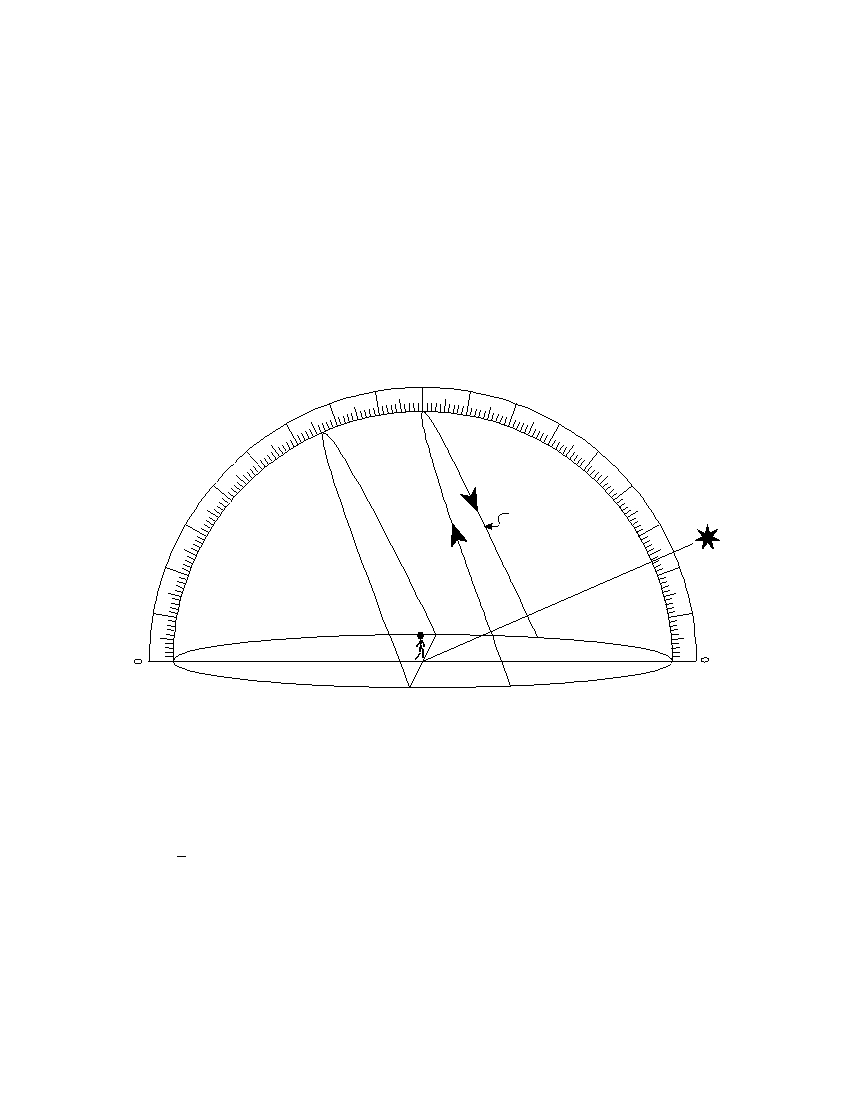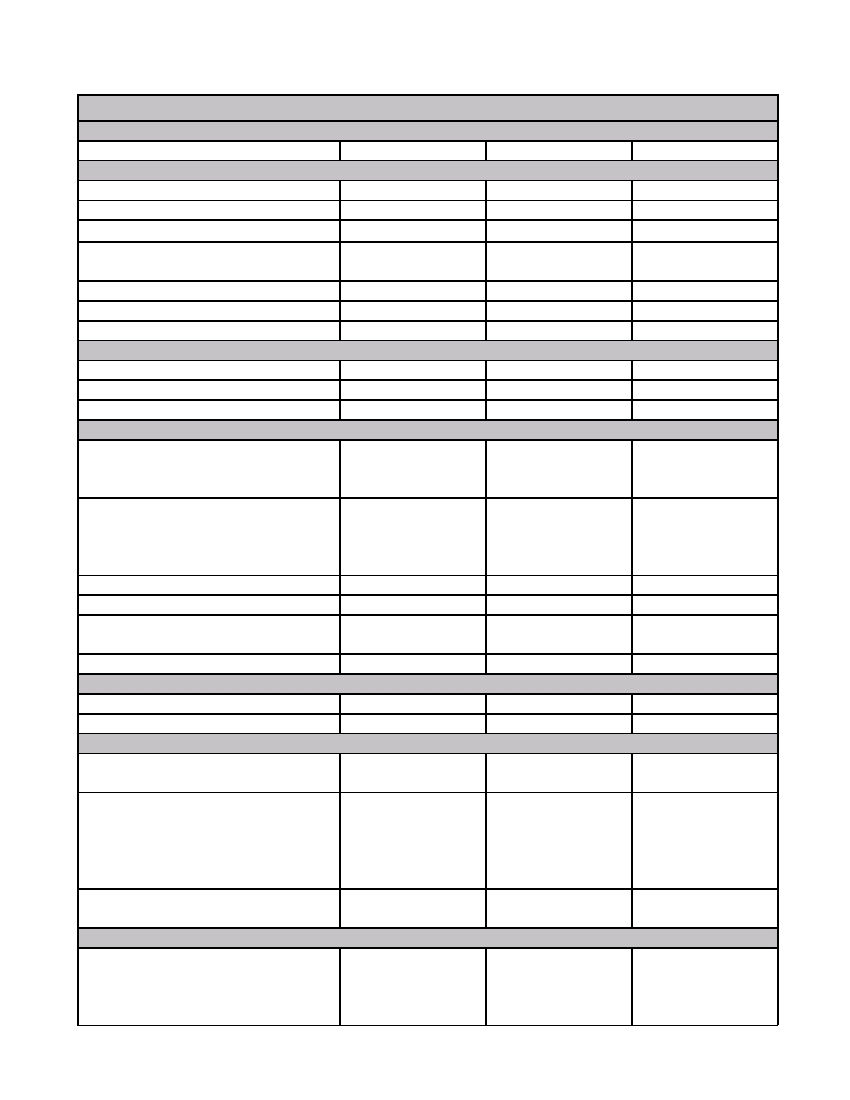
FORTEACHERS ONLY
The University of the State of New York
REGENTS HIGH SCHOOL EXAMINATION
PS–ES PHYSICAL SETTING/EARTH SCIENCE
Wednesday, June 22, 2005 — 9:15 a.m. to 12:15 p.m., only
SCORING KEY AND RATING GUIDE
Directions to the Teacher:
Refer to the directions on page 3 before rating student papers.
Updated information regarding the rating of this examination may be posted on the New York State
Education Department’s web site during the rating period. Visit the site http://www.emsc.nysed.gov/osa/
and select the link “Latest Information” for any recently posted information regarding this examina-
tion. This site should be checked before the rating process for this examination begins and at least one
more time before the final scores for the examination are recorded.
Part A and Part B–1
Allow 1 credit for each correct response.
Part A
Part B–1
1 . . . . 2. . . . . . . .
13 . . . . 1. . . . . . . .
25 . . . 1. . . . . . . .
36 . . . . 4. . . . . . . .
44 . . . . 1. . . . . . . .
2 . . . . 3. . . . . . . .
14 . . . . 1. . . . . . . .
26 . . . 3. . . . . . . .
37 . . . . 2. . . . . . . .
45 . . . . 2. . . . . . . .
3 . . . . 4. . . . . . . .
15 . . . . 4. . . . . . . .
27 . . . 1. . . . . . . .
38 . . . . 3. . . . . . . .
46 . . . . 1. . . . . . . .
4 . . . . 1. . . . . . . .
16 . . . . 2. . . . . . . .
28 . . . 3. . . . . . . .
39 . . . . 1. . . . . . . .
47 . . . . 2. . . . . . . .
5 . . . . 2. . . . . . . .
17 . . . . 3. . . . . . . .
29 . . . 3. . . . . . . .
40 . . . . 3. . . . . . . .
48 . . . . 3. . . . . . . .
6 . . . . 3. . . . . . . .
18 . . . . 1. . . . . . . .
30 . . . 1. . . . . . . .
41 . . . . 4. . . . . . . .
49 . . . . 1. . . . . . . .
7 . . . . 1. . . . . . . .
19 . . . . 4. . . . . . . .
31 . . . 4. . . . . . . .
42 . . . . 4. . . . . . . .
50 . . . . 4. . . . . . . .
Part B–1 Score
8 . . . . 3. . . . . . . .
20 . . . . 3. . . . . . . .
32 . . . 1. . . . . . . .
43 . . . . 2. . . . . . . .
9 . . . . 4. . . . . . . .
21 . . . . 4. . . . . . . .
33 . . . 2. . . . . . . .
10 . . . . 1. . . . . . . .
22 . . . . 2. . . . . . . .
34 . . . 4. . . . . . . .
11 . . . . 4. . . . . . . .
23 . . . . 4. . . . . . . .
35 . . . 4. . . . . . . .
Part A Score
12 . . . . 4. . . . . . . .
24 . . . . 4. . . . . . . .
2
[1]


P HYSICAL SETTING/ E ARTH S CIENCE – continued
Directions to the Teacher
Follow the procedures below for scoring student answer papers for the Physical
Setting/Earth Science examination. Additional information about scoring is provided in the
publication Information Booklet for Administering and Scoring Regents Examinations in the
Sciences .
Use only red ink or red pencil in rating Regents papers. Do not correct the student’s
work by making insertions or changes of any kind.
On the detachable answer sheet for Part A and Part B–1, indicate by means of a check-
mark each incorrect or omitted answer. In the box provided at the end of each part, record
the number of questions the student answered correctly for that part.
At least two science teachers must participate in the scoring of each student’s responses
to the Part B–2 and Part C open-ended questions. Each of these teachers should be respon-
sible for scoring a selected number of the open-ended questions on each answer paper. No
one teacher is to score all the open-ended questions on a student’s answer paper.
Students’ responses must be scored strictly according to the Scoring Key and Rating
Guide. For open-ended questions, credit may be allowed for responses other than those
given in the rating guide if the response is a scientifically accurate answer to the question
and demonstrates adequate knowledge as indicated by the examples in the rating guide. In
the student’s answer booklet, record the number of credits earned for each answer in the
box printed to the right of the answer lines or spaces for that question.
Fractional credit is not allowed. Only whole-number credit may be given to a response.
Units need not be given when the wording of the questions allows such omissions.
Raters should enter the scores earned for Part A, Part B–1, Part B–2, and Part C on the
appropriate lines in the box printed on the answer booklet and then should add these four
scores and enter the total in the box labeled “Total Written Test Score.” The student’s
score for the Earth Science Performance Test should be entered in the space provided.
Then, the student’s raw scores on the performance test and written test should be
converted to a scaled score by using the conversion chart that will be posted on the
Department’s web site http://www.emsc.nysed.gov/osa/ on Wednesday, June 22, 2005. The
student’s scaled score should be entered in the labeled box on the student’s answer booklet.
The scaled score is the student’s final examination score.
All student answer papers that receive a scaled score of 60 through 64 must be scored
a second time. For the second scoring, a different committee of teachers may score the stu-
dent’s paper or the original committee may score the paper, except that no teacher may
score the same open-ended questions that he/she scored in the first rating of the paper. The
school principal is responsible for assuring that the student’s final examination score is based
on a fair, accurate, and reliable scoring of the student’s answer paper.
Because scaled scores corresponding to raw scores in the conversion chart may change
from one examination to another, it is crucial that for each administration, the conversion
chart provided for that administration be used to determine the student’s final score.
[3]
[OVER]

P HYSICAL SETTING/ E ARTH S CIENCE – continued
Part B–2
Allow a total of 15 credits for this part. The student must answer all questions in this part.
51
[1] Allow 1 credit for a correct response. Acceptable responses include, but are not limited to:
Warm, moist air is less dense than cold, dry air.
Cold air is moving under the warm air and forcing the warm air upward.
52
[1] Allow 1 credit for a correct response. Acceptable responses include, but are not limited to:
expanding air
cooling to the dewpoint
condensation
sublimation
53
[1] Allow 1 credit for a correct response. Acceptable responses include, but are not limited to:
Gulf of Mexico
a warm ocean surface
54
[1] Allow 1 credit for 44.5° N (latitude) and 73.7° W (longitude). The correct compass directions and
degrees must be included for both latitude and longitude to receive credit.
55
[1] Allow 1 credit for 3 or three.
56
[1] Allow 1 credit for a correct response. Acceptable responses include, but are not limited to:
Peru is closer to the epicenter.
57
[1] Allow 1 credit for 3 min 0 sec (±20 sec).
58
[1] Allow 1 credit for the correct response shown below.
Rock unit VII:
3
Rock unit VIII:
1
Rock unit IX:
2
[4]

P HYSICAL SETTING/ E ARTH S CIENCE – continued
59
[1] Allow 1 credit for Cryptolithus and Phacops .
60
[1] Allow 1 credit for a correct response. Acceptable responses include, but are not limited to:
marine
ocean
water
61
[1] Allow 1 credit for a correct response. Acceptable responses include, but are not limited to:
The type 3 stream meanders more.
The type 3 stream occupies a wider floodplain.
The type 1 stream has a straighter course.
62
[1] Allow 1 credit for a correct response. Acceptable responses include, but are not limited to:
Stream velocity is greater on the outside of the meandering channel.
Stream flow is slower on the inside of the meandering channel.
Water is moving faster on the outside of a meander curve.
63
[1] Allow 1 credit for a correct response. Acceptable responses include, but are not limited to:
These tumbling cobbles and pebbles were abraded against other transported rocks and the
stream channel.
Abrasion occurred as the rocks bounced and rolled along the bottom of the streambed.
Sharp corners and edges were knocked off, scraped, and/or worn down.
grinding against other sediment and rocks
Note: Do not allow credit for statements that describe the water alone as the primary cause of
rounding.
64
[1] Allow 1 credit for 1002.1 mb.
65
[1] Allow 1 credit if both the compass direction and wind speed are correct, as shown below.
from the south southeast (SSE) or southeast (SE) at 25 knots (±2)
[5]
[OVER]

P HYSICAL SETTING/ E ARTH S CIENCE – continued
Part C
Allow a total of 20 credits for this part. The student must answer all questions in this part.
66
[2] Allow 2 credits if 8 to 10 points are correctly plotted (±2 seconds) and correctly connected with a line.
Allow 1 credit if only 6 or 7 points are correctly plotted (±2 seconds) and correctly connected with a
line.
or
Allow 1 credit if 8 to 10 points are correctly plotted (±2 seconds) but are not correctly connected with
a line.
Example of a 2-Credit Response
Apparent Diameter of the Sun
32'40"
32'30"
32'20"
32'10"
32'00"
31'50"
31'40"
31'30"
31'20"
1 10 20 30 10 20 1 10 20 30 10 20 3010 20 30 10 20 30 10 20 30 10 20 30 10 20 30 10 20 30 10 20 30 10 20 30
Jan
Feb
Mar
Apr
May
Jun
Jul
Aug
Sep
Oct
Nov
Dec
Date
Note: Allow credit if the student-drawn line is dot-to-dot or a smooth curve.
Also allow credit if a symbol other than a dot is used.
67
[1] Allow 1 credit for a correct response. Acceptable responses include, but are not limited to:
Earth has an elliptical orbit.
The distance between the Sun and Earth varies in a cyclic manner.
Earth is closest to the Sun during New York State’s winter.
The Sun is farthest from Earth during New York State’s summer.
[6]

P HYSICAL SETTING/ E ARTH S CIENCE – continued
68
[1] Allow 1 credit for a correct response. Acceptable responses include, but are not limited to:
water vapor (H 2 O)
methane (CH 4 )
carbon dioxide (CO 2 )
nitrous oxide (N 2 O)
ozone (O 3 )
chlorofluorocarbons (CFCs)
69
[1] Allow 1 credit for a correct response. Acceptable responses include, but are not limited to:
unsorted deposits
moraines
drumlins
till
mixed sediment sizes
glacial erratics/boulders
striated sediment
70
[1] Allow 1 credit for a correct response. Acceptable responses include, but are not limited to:
a high elevation above sea level
mountains
a plateau
71
[1] Allow 1 credit for a correct response. Acceptable responses include, but are not limited to:
Stop burning fossil fuels.
Reduce the burning of tropical rain forests.
Reduce greenhouse-gas emissions.
Use more alternative energy sources such as solar collectors and wind turbines.
72
[1] Allow 1 credit for 450 ft (±50).
[7]
[OVER]

P HYSICAL SETTING/ E ARTH S CIENCE – continued
73
[1] Allow 1 credit for a correct response. Acceptable responses include, but are not limited to:
The continental ice sheet generally moved from north to south.
glacial erosion
The original stream valleys had a north-south orientation.
74
[1] Allow 1 credit for a correct response. Acceptable responses include, but are not limited to:
Water has a higher specific heat than land.
Water heats and cools slowly because of its higher specific heat.
Bodies of water change temperature more slowly than surrounding land.
75
[1] Allow 1 credit for identifying two correct processes. Acceptable responses include, but are not limited to:
Sediments were deposited in water and compressed.
compaction and deposition
burial and cementation
chemical precipitation and evaporation
[8]

P HYSICAL SETTING/ E ARTH S CIENCE – continued
76
[1] Allow 1 credit if the student draws one or more arrows pointing in the correct direction. If more than
one arrow is drawn, all arrows must be correct to receive credit.
77
[2] Allow 1 credit for a path that starts on the horizon due east of the observer and ends due west of the
observer.
and
Allow 1 credit if the Sun’s apparent path is drawn so that the altitude of the Sun at noon is 66.5° (±2°).
76 and 77 An example of correctly drawn arrows and the apparent September 23 path are shown below.
Sailor’s Observations on the Deserted Island
80
90
80
70
70
60
60
50
50
40
40
Apparent
Sun’s
position of
30
30
apparent
Polaris
September
path
June
20
20
21
23
10
10
W
S
N
E
78
[1] Allow 1 credit for a correct response. The correct compass direction and units must be included to
receive credit. Acceptable responses include, but are not limited to:
23°30 ' N (±1°)
23.5° N (±1°)
23 ° N (±1°)
1
2
79
[1] Allow 1 credit for a correct response. Acceptable responses include, but are not limited to:
15
15° E
15° W
[9]
[OVER]

P HYSICAL SETTING/ E ARTH S CIENCE – concluded
80
[1] Allow 1 credit for a correct response. Acceptable responses include, but are not limited to:
Location B is at a transform fault, and location C is at a subduction boundary.
Location B has horizontal plate movement, but location C has vertical plate movement.
There is a transform plate boundary at B .
There is a subducting plate at C .
81
[1] Allow 1 credit for a correct response. Acceptable responses include, but are not limited to:
A is located at a plate boundary, and D is not located at a plate boundary.
Crustal plates are colliding at A , and no plate collision is occurring at D .
Location A is on the Pacific Ring of Fire.
82
[1] Allow 1 credit for a correct response. Acceptable responses include, but are not limited to:
E is located above a mantle hot spot.
E is the Canary Islands Hot Spot.
F is near the center of a tectonic plate.
83
[1] Allow 1 credit for a correct response. Acceptable responses include, but are not limited to:
Location G is at the ridge and is presently forming, while H was at the ridge in the past.
Location H is moving away from the new crust forming in the region at G .
The youngest ocean-floor bedrock is at the mid-ocean ridge.
The plates are diverging at the Southeast Indian Ridge.
[10]

The Chart for Determining the Final Examination Score for the June 2005
Regents Examination in Physical Setting/Earth Science will be posted on the
Department’s web site http://www.emsc.nysed.gov/osa/ on Wednesday, June 22,
2005. Conversion charts provided for previous administrations of the
Regents Examination in Physical Setting/Earth Science must NOT be used
to determine students’ final scores for this administration.
[11]
[OVER]

Map to Core Curriculum
June 2005 Physical Setting/Earth Science
Question Numbers
Key Ideas/Performance Indicators
Part A
Part B
Part C
Standard 1
Math Key Idea 1
5, 31,33
44,49,61
66,74,78,79
Math Key Idea 2
3,15,18,26,29
43,55,57
72
Math Key Idea 3
30
Science Inquiry Key Idea 1
10,17,19,25,27,
39,41,53,58,60,
67,70,73,74,81,
31
61,62,63
82
Science Inquiry Key Idea 2
Science Inquiry Key Idea 3
39
Engineering Design Key Idea 1
Standard 2
Key Idea 1
Key Idea 2
Key Idea 3
Standard 6
Key Idea 1
4,11,28,32
37,50,52,55,61,
67,68,69,73,79,
62
80,81,82
Key Idea 2
3,6,7,9,14,16,18, 37,38,40,42,43,
66,72,76,77,78,
20,21,23,24,26,
44,45,46,47,48,
80,81,82,83
28,31,34,35
49,51,54,56,58,
59,64,65
Key Idea 3
1,30
56
Key Idea 4
12
Key Idea 5
2,6,7,8,9,15,18,
37,38,50,51,52,
66,67,75,76,77,
22,29
61,63
79,81,82,83
Key Idea 6
71
Standard 7
Key Idea 1
Key Idea 2
71
Standard 4
Key Idea 1
1,2,3,4,5,6,7,8,9, 40,41,47,48,49
66,67,76,77,78,
17,29,30,31,33
50,54,58,59,60
79
Key Idea 2
2,7,8,10,11,12,
36,37,38,39,41,
68,69,70,71,72,
13,14,15,16,18,
42,43,44,45,46,
73,74,75,80,81,
22,25,26,27,28,
51,52,53,55,56,
82,83
32,33,34,35
57,61,62,63,64,
65
Key Idea 3
19,20,21,22,23,
39
75
24
Reference Tables
ESRT 2001 Edition
1,3,4,5,15,16,18, 39,40,44,45,46,
74,75,80,81,82,
19,20,21,22,24,
47,49,53,57,58,
83
25,26,27,28,30,
59,64,65
31,33,34
[12]